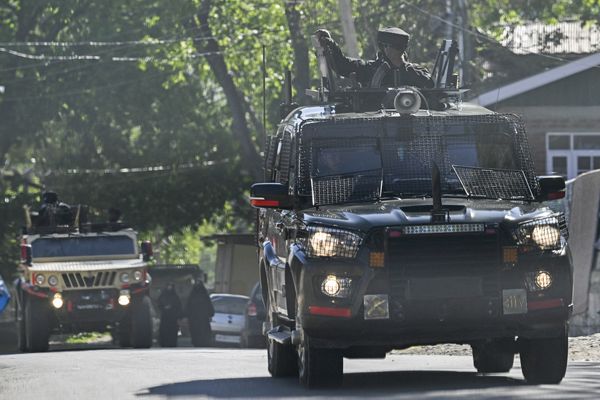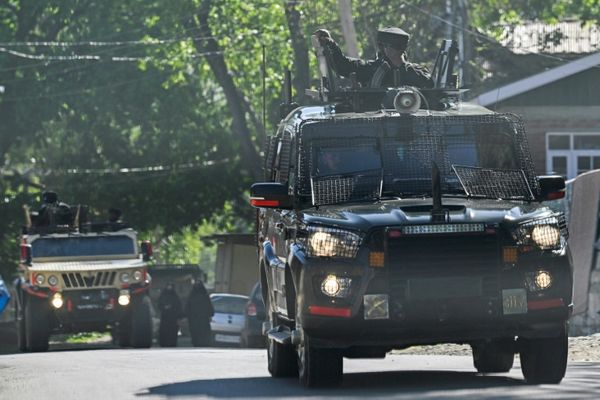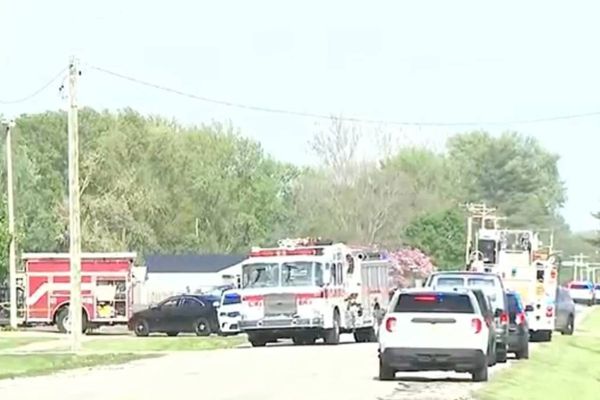
A flood of misinformation about the Southport attack has been spread on numerous social media platforms by sources ranging from far-right activists to fake news websites and conspiracy theorists.
On Tuesday afternoon, the home secretary, Yvette Cooper, urged the public to avoid “unhelpful” speculation about the attack, which left three children dead, saying social media companies “need to take some responsibility” for the content being shared on their sites.
“Above all, this is about young children,” she said. “This is about children and their families who will be grieving, and the many other children who were involved yesterday who will be facing great trauma as well.”
The only details released about the suspect by police are that he is a 17-year-old from the village of Banks in Lancashire, who was born in Cardiff.
But on Tuesday night a protest by hundreds of far-right activists, believed to be supporters of the English Defence League, saw missiles thrown at police and a local mosque attacked.
The incident became the latest to raise questions about the policing of content by social media companies, and official watchdogs, and whether the law is fit is for purpose.
A prominent British conspiracy theorist had earlier been filming at the crime scene. A YouTube video where he calls for emergency military rule and mass deportations received 30,000 views in the two hours after it was posted on Tuesday.
The ‘“source’” for the false name of the attacker appears to be a website seen by the Guardian calling itself Channel 3 Now, which mixes potentially AI-generated US and UK news content and is styled like a mainstream American network news channel. It did not reply to requests for comment from the Guardian or provide details of who owns or runs it.
The name and other false claims about the suspect were being shared by influencers on platforms such as TikTok. One such video, also seen by the Guardian, from a self-styled social media influencer and Reform UK supporter who goes by the name of brucesrandomness, had been viewed nearly 800,000 times.
The same influencer posted a subsequent video in which he apologised for “probably incorrectly” naming the suspect after seeing “some headlines over the internet” and acting out of anger. He has been approached for comment, as has TikTok.
However, more established far-right actors and disseminators of conspiracy theories who found new supporters during the Covid-19 pandemic have been quick to seize on the attack.
Tommy Robinson – who is believed to be somewhere in Europe after leaving the UK on Sunday night on the eve of his scheduled appearance at the high court in alleged contempt of court proceedings – has been exploiting the deaths of the children to push an anti-immigration narrative on channels including the X account that Elon Musk recently restored to him.
In a reflection of how that narrative was finding traction on this occasion beyond the usual followers of Robinson, whose real name is Stephen Yaxley-Lennon, the entrepreneur Duncan Bannatyne tweeted to his own 677,000 followers that “maybe he [Tommy Robinson] was right all along”.
The former BBC star later deleted the reference after being contacted by the Guardian, and a spokesperson said: “Duncan is very upset at the Southport attacks, which he has expressed on X.”
However, another Bannatyne tweet remained online in which he retweeted a claim by the Robinson ally Laurence Fox that police were suppressing details, and asked: “What information are they suppressing?”
Dr Rod Dacombe, the head of the department of political economy at King’s College London and an expert in conspiracy theories, said individual social media users had been important in spreading a lot of the misinformation but fake media sites had added a veneer of credibility, often with blatant falsehoods.
“For some people these alternative media sites are really important. They give them something to share, and look superficially like conventional news sites, although they don’t engage in standard journalistic practices and sometimes just speculate wildly,” he said.
As well as the site which appears to have been the source for the false name, Dacombe cited the Unity News Network, a British conspiracy theory website headed by a former Conservative and Labour councillor, which has also jumped on the attack.
“It’s much more participatory with a nightly news programme format where he interacts with conversations and engages with callers,” he added.
“These are sites that are really important for a small but deeply engaged group of people, but events like this mean that a lot of their misinformation is being shared much more widely than they would otherwise have been.
“It’s also the case that there is little to regulate or filter what is going on. It really does feel like the wild west.”







